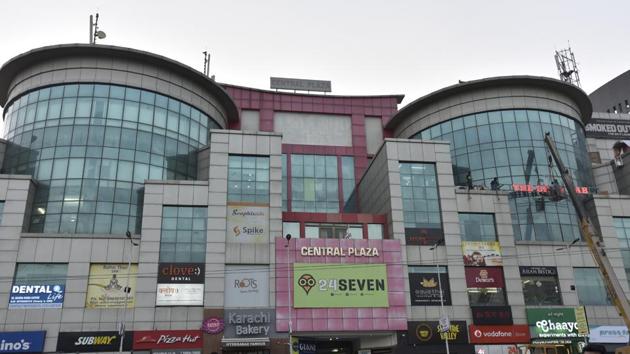Parking space can never suffice, regulation required to ease jams
Areawise planning, price parking and managing parking spaces can reduce use of private vehicles, bring in revenue and help clear public space.
Imagine what will happen if I went to the municipal corporation’s office asking its officials to provide me with a storage space for a newly bought refrigerator? Or, if I went to the deputy commissioner’s office asking him to provide me with a storage space to keep my air conditioner? On a good day, officers at both of these offices will laugh at me. On any other day, however, I will probably be thrown out of the offices, with the officials thinking that I was half-seas-over.

Let us tweak this conversation a bit, and replace the refrigerator and the air conditioner with a car, and the storage space with a space for parking. Now, both the offices and their officers will not only give me time, but they will also be very sympathetic to my situation. See, that is how conversations change, but are they really so different?
Let us look at who manufactures these goods, including cars, and who purchases them. It is the private sector, right? So then, why is the government expected to provide space for storing private vehicles and not for storing air conditioners refrigerators, fans etc? Nonetheless, public agencies are happily obliged to do that. Gurugram, however, has gone to the other extreme of ‘motor-vehicle appeasement’ by exempting the basements of shopping malls or commercial centres from paying property tax, if they provide free parking spaces.
In addition, cities spend crores in building multi-level parking lots. With all these exemptions and favours, has Gurugram, or for that matter most of the Indian cities, solved the parking issue? The answer is in the negative. So, why have our cities made such a mess of parking? Well, the answer is because cities have still not understood the concept of parking. Let me highlight three crucial aspects:
Don’t provide, manage parking
It is seen from global as well as Indian experiences that there can never be enough parking. Therefore, there is a need for parking management in cities. One way to start looking at this issue is by developing a parking policy, which gives directions on some of the fundamentals of parking: What is the intention of a parking lot? On one hand , providing parking encourages the use of private vehicles but, on the other hand, it can also be used as a strategy for reducing the use of private vehicles. The second question is what should be the duration of parking? Most of the time, shopkeepers in commercial areas, park their cars early in the morning and take them out only during the night. This means that an entire prime real-estate space is blocked for a few motor vehicles. As a result, people park their cars on the road, thereby creating bottlenecks. The third is how can parking be used to address issues such as mobility, road safety and air pollution in the city.
Price parking, it works
One of the most effective, tried-and-tested strategies of managing parking is charging for it. Right pricing does three things for parking — first, it reshapes the usage of parking lots, which means that if the pricing is right, people will park only when they need. Therefore, the space can be used for multiple vehicles, thereby decreasing the overall need for parking spots. Second, multi-level parking policy also acts as a deterrent to private automobiles. This, in turn, increases the use of public transport, assuming that it is available. Third, and most important, is the fact that parking can be a great source for revenue generation. This aspect is missing in Indian cities. Till 2015, a total of 29 lakh cars and 56 lakh two-wheelers were registered in Delhi. Assuming that 50 percent was in use and paid at least once during a day a parking fee of ₹20 for car and Rs10 for a two-wheeler, the city would generate an annual revenue of ₹1,500 crore from parking alone, that too not including outside vehicles.
Make area plans, not projects
Parking needs an area-based approach rather than isolated projects. Last month, the 150-crore, multi-level parking project, planned for 1,000 cars and 500 motor cycles has around one percent usage. Why? Because it is much easier to freely park on the road instead of a parking lot, and then walking almost 200 to 300 metres. This is the story not just in Gurugram or in Delhi, but in most cities in the country. It is always easier and cheaper to park on the road, than go up-and-down a parking lot. Therefore, what a city needs is an area-wise parking plan with strict rules against on-street parking. In addition, the area parking plan should be given to one parking operator, and it would be the responsibility of that agency to provide for and manage parking in that area.
State governments struggle to provide a 30-square-metre house at around ₹5 lakh for BPL and EWS sections of the society, but cities are happily investing a 32-square-metre space for housing a motor vehicle by providing free parking and tax incentives.
Therefore, it is time that cities decide what is more important: human beings or metal objects, because the National Urban Transport Policy already stated, more than a decade back, that cities should be planned for people and not for motor vehicles.
(Amit Bhatt is the director of integrated transport, WRI India)






